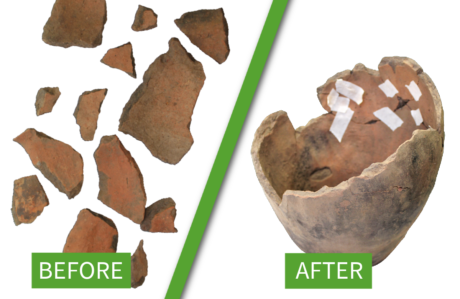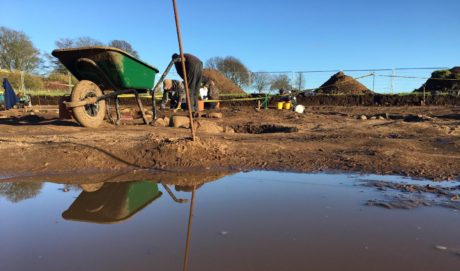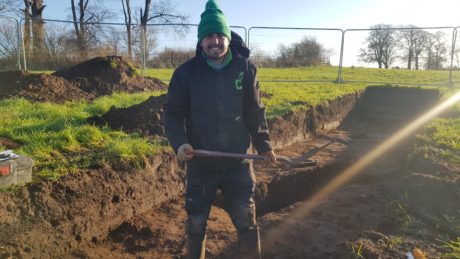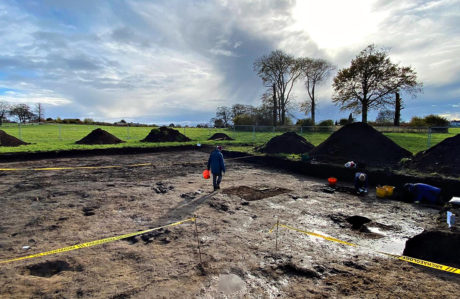
This week, our Roman dig has revealed lots of pottery, plenty of postholes, and an almost-complete vessel.
Two weeks into our excavation for Discover Brightwater, and we’ve already made some cracking progress as we unearth the vast Roman settlement buried at East Park, Sedgefield.
It’s been a rainy week, and the trench has certainly taken the brunt of it, but despite the mud our Venturers have been as keen as ever. And it shows: they’ve made some fantastic progress.
We’re trying to map a Roman town
We began the week with a ‘big clean’. By removing a thin layer across the surface of the exposed site, we managed to highlight the features in the soil so we could better identify them for investigation.
As we noted last week, the research aims for this year are very wide-reaching. The settlement is huge, so rather than trying to excavate one small area in detail, we’re trying to reveal, map and record as much as we can so that we can see the layout of the town on a bigger scale.
We might have found evidence of Roman metalworking
At the start of the week, Erin and Ben began investigating a circular pit feature in the north west end of the trench.
This area gave us a lot in terms of finds: slag and charcoal were abundant, making us hopeful that our mysterious feature may be linked to some sort of Roman metalworking structure.
But as is always the case with archaeology, we were taken by surprise when we realised we weren’t the first to dig here.
No, we didn’t run into the aftermath of Time Team! Our visitor wasn’t even human: some sort of critter had burrowed its way into our Roman pit.
This isn’t the first time the field team have seen something like this on an archaeological site – our furry friends tend to seek out disturbed soil as its softer texture makes burrowing much easier. Not what we were hoping for, but a fun development all the same, and a reminder that archaeology has a unique way of keeping you on your toes.
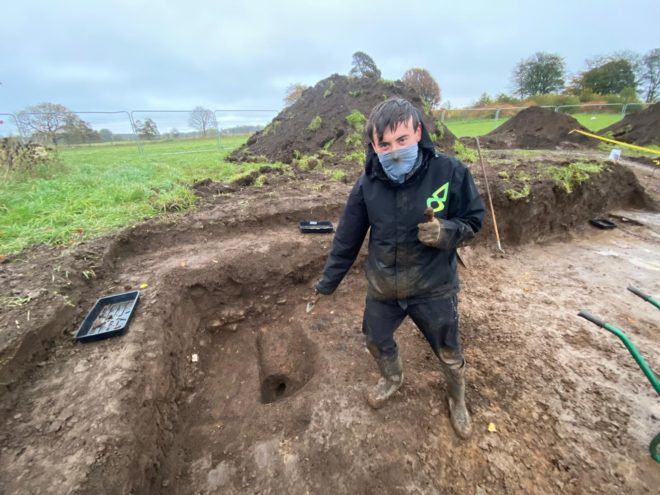
Roman animal remains
The north east end of the trench gave us more human features, and animal evidence of another kind! The soils at East Park have a high acidity level, which means material like bone often doesn’t survive. However, in this area we found a pretty large assemblage of animal remains in one of the enclosure ditches.
Analysing this post-excavation could tell us a lot about the lifestyle of the people here: what animals they were keeping around, and maybe eating!

Roman postholes
One of the richest areas of the trench is in the south west. Our Venturers have been investigating several unusual features to build a picture of what this site looked like in the Roman period. One type of feature that we’re seeing a lot are these rounded ditches filled with stone assemblages. We have a feeling these might actually be postholes, but we don’t want to jump the gun!
Archaeology is ever-changing, it all depends on the material evidence, so the next four weeks might reveal something ground-breaking that changes our minds completely. If this is the case, though, then we could be potentially be looking at a kind of wooden structure – how exciting!
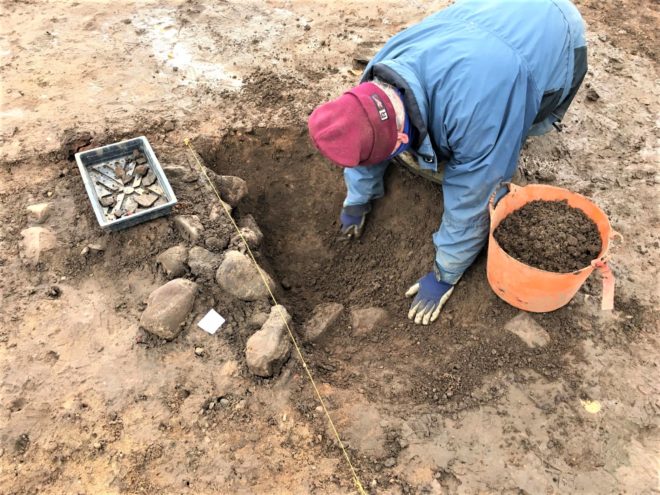
Highlight of the week: Roman pottery!
The pits in this area have also held some fantastic pottery. From amphorae to greyware, and even what looks like a mostly complete vessel.
Everyone on site is waiting in anticipation for the moment we carefully lift it from the muddy depths.
Already this site is shaping up to be a gift that keeps on giving in terms of Roman archaeology, we can’t wait to see where the next few weeks takes us.
What do you think our findings mean so far? Drop us a comment and let us know!
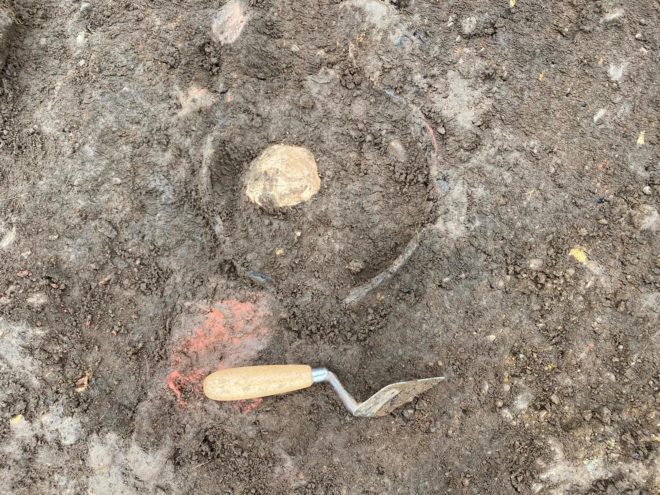
About Discover Brightwater
These dig is part of Discover Brightwater – a huge project which aims to restore, reveal and celebrate life around the River Skerne.
It is supported by the National Lottery Heritage Fund, and the events which focus on the historic environment are the initiative of Durham County Council’s Archaeology Section. As part of the project, DigVentures is organising public participation in events at five different archaeological sites, including East Park, Legs Cross Bolam, and Bishop Middleham. Find out more.
